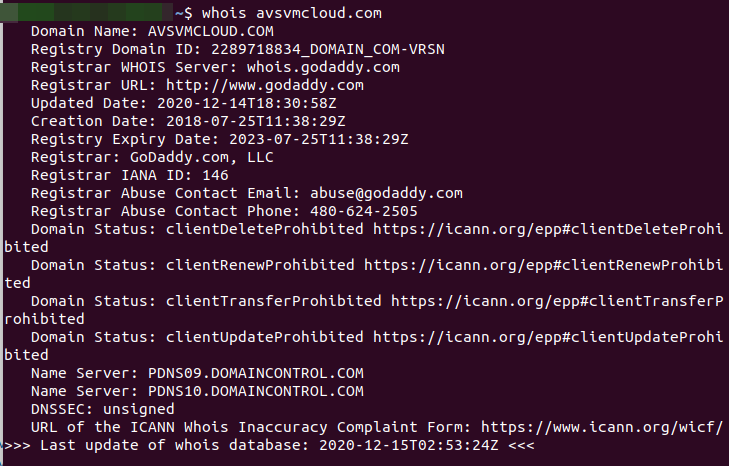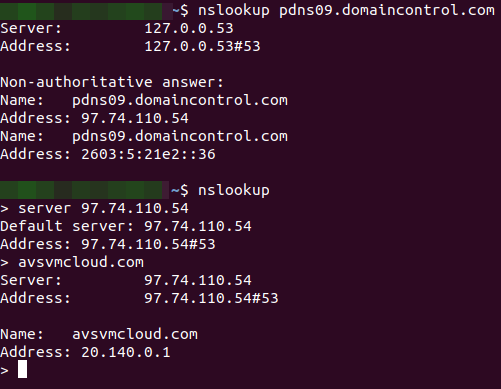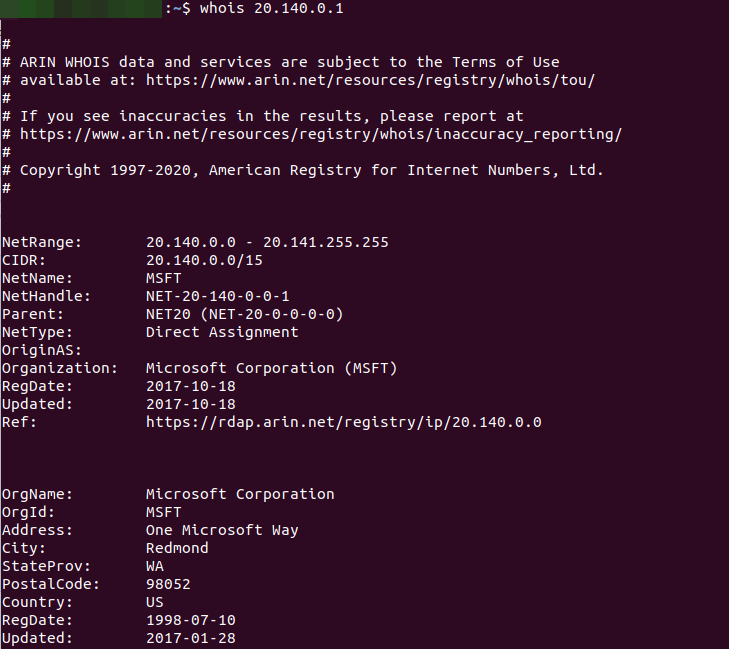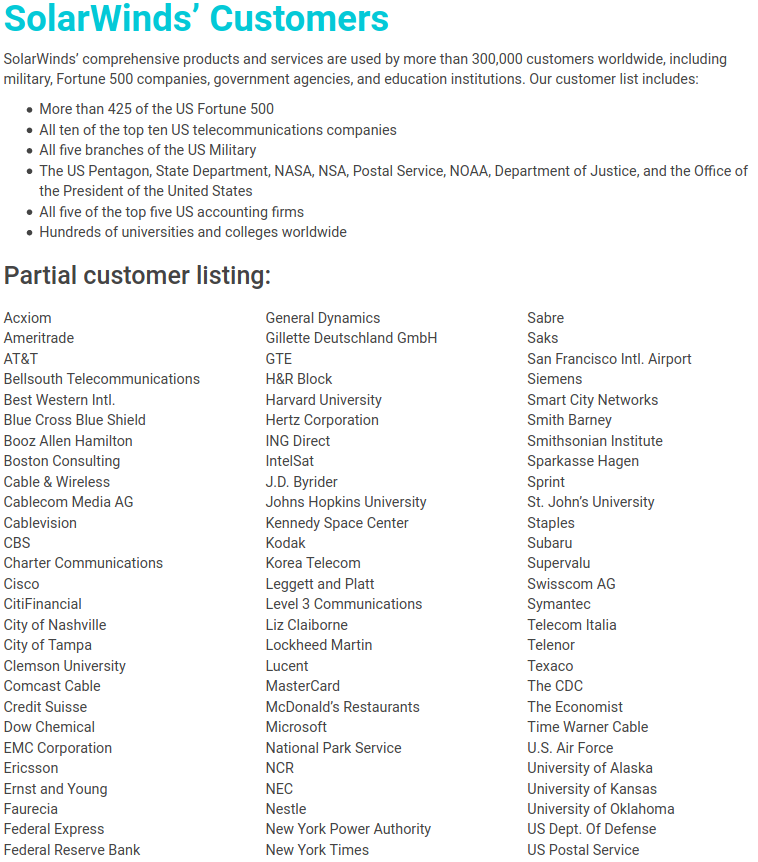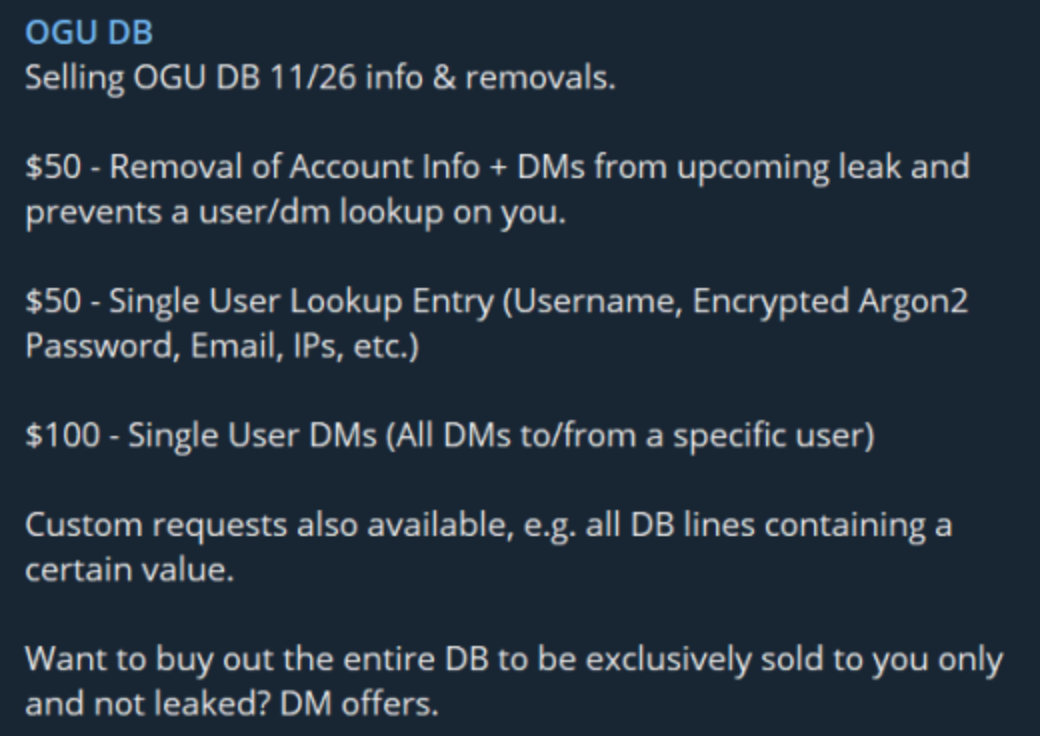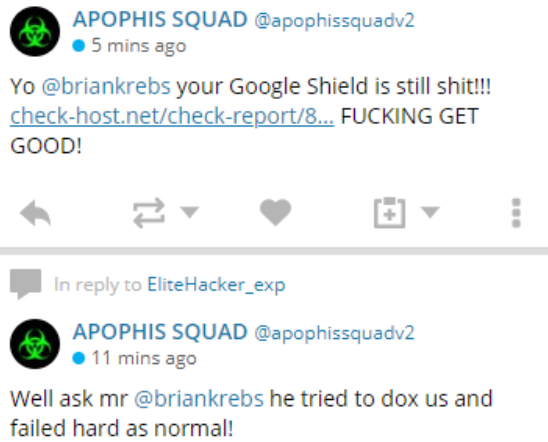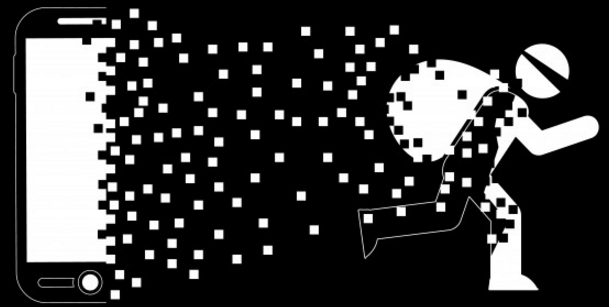The still-unfolding breach at network management software firm SolarWinds may have resulted in malicious code being pushed to nearly 18,000 customers, the company said in a legal filing on Monday. Meanwhile, Microsoft should soon have some idea which and how many SolarWinds customers were affected, as it recently took possession of a key domain name used by the intruders to control infected systems.

On Dec. 13, SolarWinds acknowledged that hackers had inserted malware into a service that provided software updates for its Orion platform, a suite of products broadly used across the U.S. federal government and Fortune 500 firms to monitor the health of their IT networks.
In a Dec. 14 filing with the U.S. Securities and Exchange Commission (SEC), SolarWinds said roughly 33,000 of its more than 300,000 customers were Orion customers, and that fewer than 18,000 customers may have had an installation of the Orion product that contained the malicious code. SolarWinds said the intrusion also compromised its Microsoft Office 365 accounts.
The initial breach disclosure from SolarWinds came five days after cybersecurity incident response firm FireEye announced it had suffered an intrusion that resulted in the theft of some 300 proprietary software tools the company provides to clients to help secure their IT operations.
On Dec. 13, FireEye published a detailed writeup on the malware infrastructure used in the SolarWinds compromise, presenting evidence that the Orion software was first compromised back in March 2020. FireEye didn’t explicitly say its own intrusion was the result of the SolarWinds hack, but the company confirmed as much to KrebsOnSecurity earlier today.
Also on Dec. 13, news broke that the SolarWinds hack resulted in attackers reading the email communications at the U.S. Treasury and Commerce departments.
On Dec. 14, Reuters reported the SolarWinds intrusion also had been used to infiltrate computer networks at the U.S. Department of Homeland Security (DHS). That disclosure came less than 24 hours after DHS’s Cybersecurity and Infrastructure Security Agency (CISA) took the unusual step of issuing an emergency directive ordering all federal agencies to immediately disconnect the affected Orion products from their networks.
ANALYSIS
Security experts have been speculating as to the extent of the damage from the SolarWinds hack, combing through details in the FireEye analysis and elsewhere for clues about how many other organizations may have been hit.
And it seems that Microsoft may now be in perhaps the best position to take stock of the carnage. That’s because sometime on Dec. 14, the software giant took control over a key domain name — avsvmcloud[.]com — that was used by the SolarWinds hackers to communicate with systems compromised by the backdoored Orion product updates.
- A WHOIS lookup on the malware control domain.
- Where does the malware control domain now point? 20.140.0.1
- A WHOIS lookup on the IP address (20.140.0.1).
Armed with that access, Microsoft should be able to tell which organizations have IT systems that are still trying to ping the malicious domain. However, because many Internet service providers and affected companies are already blocking systems from accessing that malicious control domain or have disconnected the vulnerable Orion services, Microsoft’s visibility may be somewhat limited.
Microsoft has a long history of working with federal investigators and the U.S. courts to seize control over domains involved in global malware menaces, particularly when those sites are being used primarily to attack Microsoft Windows customers.
Microsoft dodged direct questions about its visibility into the malware control domain, suggesting those queries would be better put to FireEye or GoDaddy (the current domain registrar for the malware control server). But in a response on Twitter, Microsoft spokesperson Jeff Jones seemed to confirm that control of the malicious domain had changed hands. Continue reading



